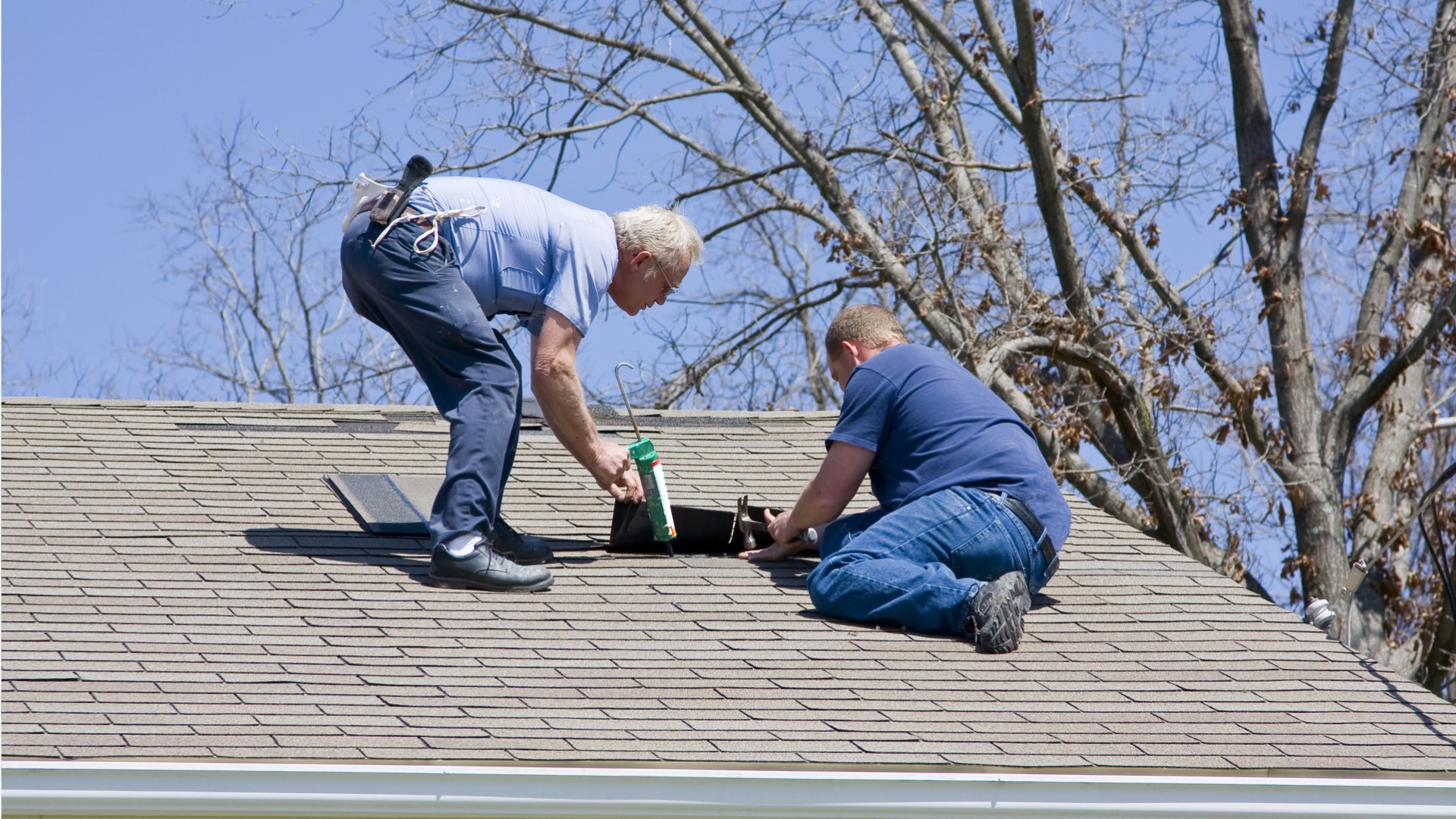Roofers
Roof Mechanic, Roof Service Technician, Roofer, Roofing Technician
 Select a military branch to see samples.
Select a military branch to see samples.
Structural; Structural Apprentice; Structural Craftsman; Structural Helper; Structural Journeyman
No similar titles were found.
Damage Controlman; Material Maintenance Specialty
No similar titles were found.
Advanced Builder; Builder
No similar titles were found.
What they do:
Cover roofs of structures with shingles, slate, asphalt, aluminum, wood, or related materials. May spray roofs, sidings, and walls with material to bind, seal, insulate, or soundproof sections of structures.
On the job, you would:
- Inspect problem roofs to determine the best repair procedures.
- Remove snow, water, or debris from roofs prior to applying roofing materials.
- Set up scaffolding to provide safe access to roofs.
Knowledge
Engineering and Technology
- building and construction
- design
Business
- customer service
- management
Arts and Humanities
- English language
Safety and Government
- public safety and security
Skills
Basic Skills
- listening to others, not interrupting, and asking good questions
- thinking about the pros and cons of different ways to solve a problem
Problem Solving
- noticing a problem and figuring out the best way to solve it
Abilities
Hand and Finger Use
- hold or move items with your hands
- keep your arm or hand steady
Endurance
- exercise for a long time without getting out of breath
Flexibility, Balance, and Coordination
- keep your balance or stay upright
- bend, stretch, twist, or reach with your body, arms, and/or legs
Controlled Movement
- use your arms and/or legs together while sitting, standing, or lying down
Personality
People interested in this work like activities that include practical, hands-on problems and solutions.
They do well at jobs that need:
- Cautiousness
- Dependability
- Attention to Detail
- Perseverance
- Stress Tolerance
- Integrity
Technology
You might use software like this on the job:
Spreadsheet software
- Microsoft Excel
Computer aided design CAD software
- AppliCad Roof Wizard
- ASR Software TopView LE
Data base user interface and query software
- CADAFIS
- Insight Direct ServiceCEO
Education
Education: (rated 2 of 5)
high school diploma/GED or
no high school diploma/GED
usually needed
no high school diploma/GED
usually needed
Job Outlook
Bright
New job opportunities are very likely in the future.
Explore More
- Drywall & Ceiling Tile Installers
- Floor Layers
- Helpers--Roofers
- Insulation Workers, Floor, Ceiling, & Wall
- Plasterers & Stucco Masons
You might like a career in one of these industries:
See more details at O*NET OnLine about Roofers.





